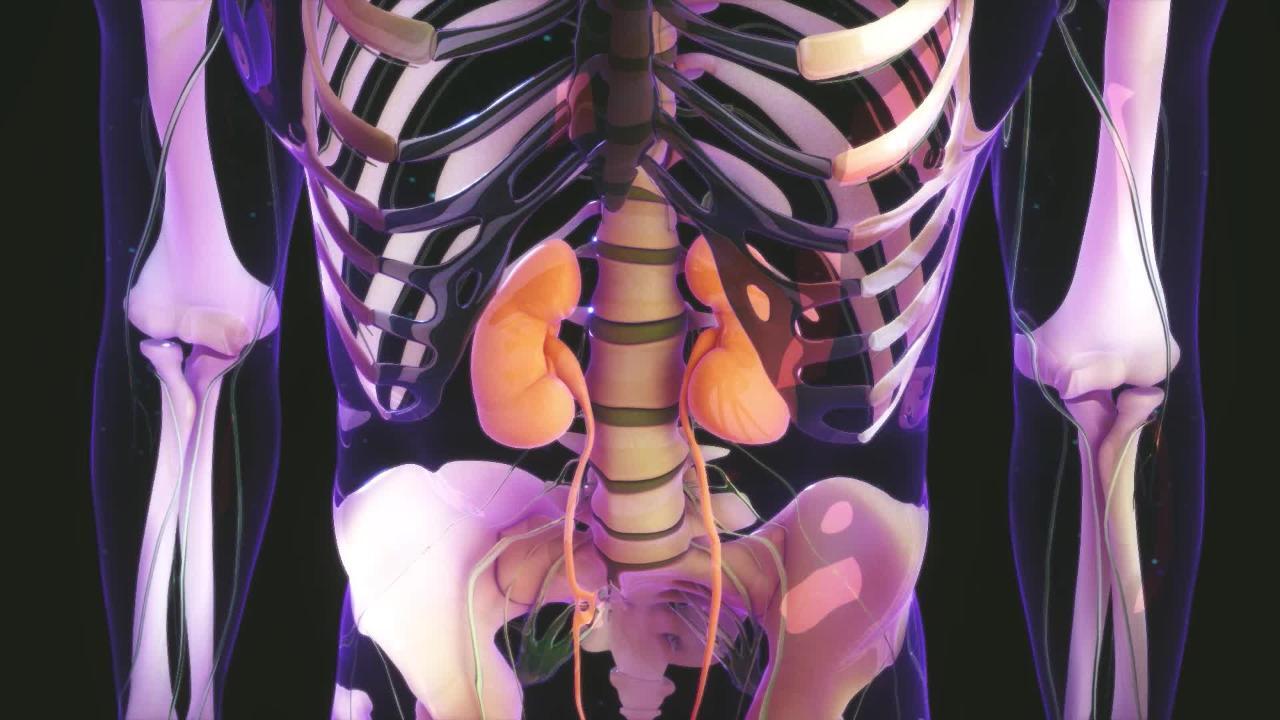One or more fluid-filled sacs (cysts) sometimes develop in the kidneys without causing serious kidney problems.
Topic Resources
Acquired cysts usually do not cause symptoms or affect kidney function. People may develop a single cyst or many cysts in one or both kidneys.
The cause of single cysts and usually of multiple cysts is unknown. However, multiple cysts are more common in people with chronic kidney disease, especially people undergoing dialysis for many years. More that 50% of people who undergo dialysis for more than 10 years develop cysts.
Acquired cysts usually cause no symptoms, but occasionally people have blood in the urine (hematuria), pain in the side (flank), or infection (typically causing fever and pain in the side). People with acquired cysts, particularly people with a transplanted kidney or who have been treated with dialysis for several years, are at risk of kidney cancer. For this reason, some doctors use ultrasound or computed tomography (CT) to periodically monitor people with acquired cysts.
Acquired cysts are most often detected when CT or ultrasound is done for some other reason.
Cysts that cause persistent bleeding or infection may require drainage or, rarely, surgery to remove part of the kidney or even the entire kidney (partial or complete nephrectomy). Cysts that develop into kidney cancers may also require nephrectomy, but this happens only rarely.
More Information
The following English-language resources may be useful. Please note that The Manual is not responsible for the content of these resources.



